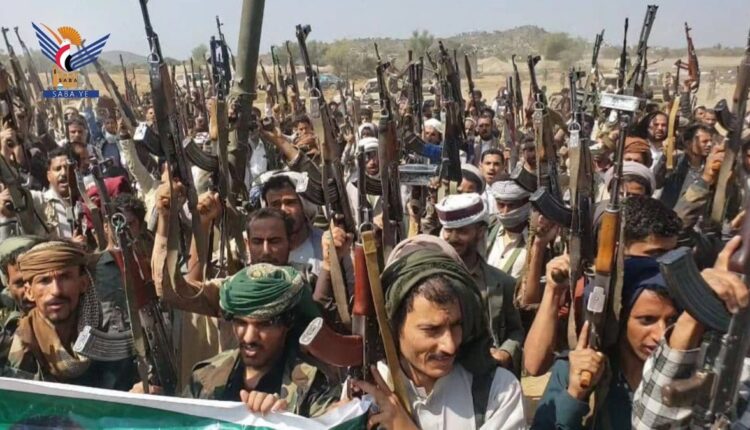How has the “Yemeni Tribe” redrawn the equation of “National Cohesion” in facing external challenges?
The Yemeni arena is witnessing an exceptional national moment where field and regional transformations intersect with a remarkable rise in the tribal role, which is forcefully returning to the forefront as one of the most important pillars of national cohesion.
This moment is manifested in a broad scene extending from Sana’a to Amran, Dhamar, Sa’ada, Al-Bayda, Hudaydah, Ibb, and all the free governorates, where meetings and gatherings are escalating, and statements are successively issued expressing a solid collective consciousness that rejects any external interference or projects targeting Yemeni identity and sovereignty.
Analyses – Al-Khabar Al-Yemeni:
This escalating tribal movement is not viewed as a transient expression of an emotional stance, but rather as a strategic indicator of the Yemeni society’s readiness to bear its national responsibilities and its conscious alignment behind the constants that preserve the country’s sovereignty and the independence of its decision. The tribe, which has long been the safety valve in the face of attempts at disintegration, is returning today as a factor of balance and stability, supporting the state in managing the escalating regional and political challenges.
In light of this scene, Yemeni tribes have begun dealing with regional changes with a role that transcends the traditional role of mobilization. They now possess a more mature political and security discourse that sets red lines for any external party attempting to exploit regional or humanitarian circumstances to pressure Yemen. This is clearly evident in the positions rejecting the continuation of the siege and the obstruction of humanitarian files, and in the repeated emphasis that popular patience is not limitless and that national rights are not subject to bargaining.
This escalating movement reflects the tribe’s ability to thwart attempts at penetration or incitement targeting the internal front and to provide a cohesive social base that grants state institutions additional strength in confronting what is known as the “shadow war” directed towards the Yemeni interior politically, media-wise, and security-wise. This reinforces the position of the revolutionary, political, and military leadership in Sana’a, which today enjoys broad popular and tribal cover.
This reality indicates that the tribe has become a fundamental player in solidifying the equation of national deterrence, given its social reach and capacity for mobilization and support. The recent activities carried clear messages that Yemen today is not an open arena for interventions, and that any hostile activity will find before it a unified, cohesive front capable of initiative just as it is capable of defense.
This social cohesion is not confined to its current moment; it represents a structural shift that redraws the features of the next phase, gives Yemen greater ability to confront pressures, and enhances society’s confidence in the state institutions’ ability to manage challenges, especially with the tribes’ readiness to supply the fronts with fighters and resources when necessary, which makes any external attempt to destabilize the Yemeni situation a perilous adventure.
The Yemeni tribe today is no longer just a traditional social component but a solid national bloc extending from the coast to the mountain, forming, together with the state, the army, and security, a robust equation of strength capable of protecting Yemen from any threat and cementing the rules of balance and strategic deterrence in the region.

